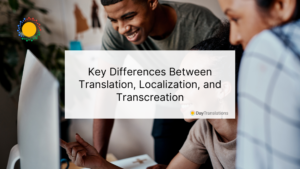Imagine using an app or software that feels like it was made just for you, with all the buttons, menus, and messages speaking your language fluently. That’s the magic of localization! In this article, we’ll explore the best practices for software and app localization to create a seamless user experience for everyone around the globe.
What is Localization?
Localization is like putting on different language glasses for your software. It’s not just about translating words; it’s about adapting the entire user interface to suit different cultures, languages, and regions. This includes everything from date formats and currency symbols to images and colors that resonate with the target audience.
The Key Elements of Successful Software and App Localization
1. Cultural Sensitivity
One of the golden rules of localization is to be culturally sensitive. This means understanding your target audience’s cultural nuances, customs, and preferences. For example, colors may have different meanings in different cultures, so choosing the right color scheme is crucial.
2. Quality Translation
A high-quality translation is the backbone of successful localization. It’s not just about converting words; it’s about conveying the message accurately while maintaining the tone and style of the original content. Working with professional translators who are native speakers of the target language is essential.
3. User-Friendly Interface
A user-friendly interface is key to a positive user experience. This includes intuitive navigation, clear instructions, and easy-to-understand visuals. Icons and symbols should be universally recognizable, eliminating the need for text where possible.
4. Adapting to Local Preferences
Different regions may have different preferences when it comes to layout, design, and functionality. For example, right-to-left languages like Arabic require a mirrored layout, while some Asian languages may need extra space for characters.
5. Testing and Iteration
Localization is an ongoing process. Testing your localized software with real users from the target audience helps identify any issues or areas for improvement. Regular updates and iterations based on user feedback ensure a continuously improved user experience.
Benefits of Effective Software and App Localization
- Expanded Market Reach: By speaking your users’ language, you open doors to new markets and demographics.
- Increased User Engagement: When users feel at home with your software, they are more likely to engage with it and become loyal customers.
- Positive Brand Perception: A well-localized product reflects your commitment to customer satisfaction and cultural diversity, enhancing your brand image.
- Legal Compliance: In some regions, localization is not just a preference but a legal requirement. Adhering to local regulations through proper localization ensures compliance and avoids potential legal issues.
Case Study: Successful Localization in Action
Let’s take a look at how PixelPlay Studios achieved success through effective localization:
PixelPlay STudios, a gaming app developer, expanded its reach to Japan by localizing its app interface, including in-game text, graphics, and promotional materials. By understanding Japanese gaming culture and preferences, they created a tailored experience that resonated with Japanese players. This led to a significant increase in downloads and user engagement, establishing PixelPlay Studios as a player in the competitive Japanese gaming market.
Wrapping Up on Software and App Localization
Localization is not just a translation; it’s a transformation that bridges cultures and connects people globally. By following best practices in cultural sensitivity, quality translation, user-friendly design, adaptation to local preferences, and continuous improvement through testing, companies can unlock new opportunities and create meaningful experiences for users worldwide.
So, whether you’re developing a mobile app, a software platform, or an online service, remember the magic of localization—it’s the key to making your software speak everyone’s language!












Sorry, the comment form is closed at this time.